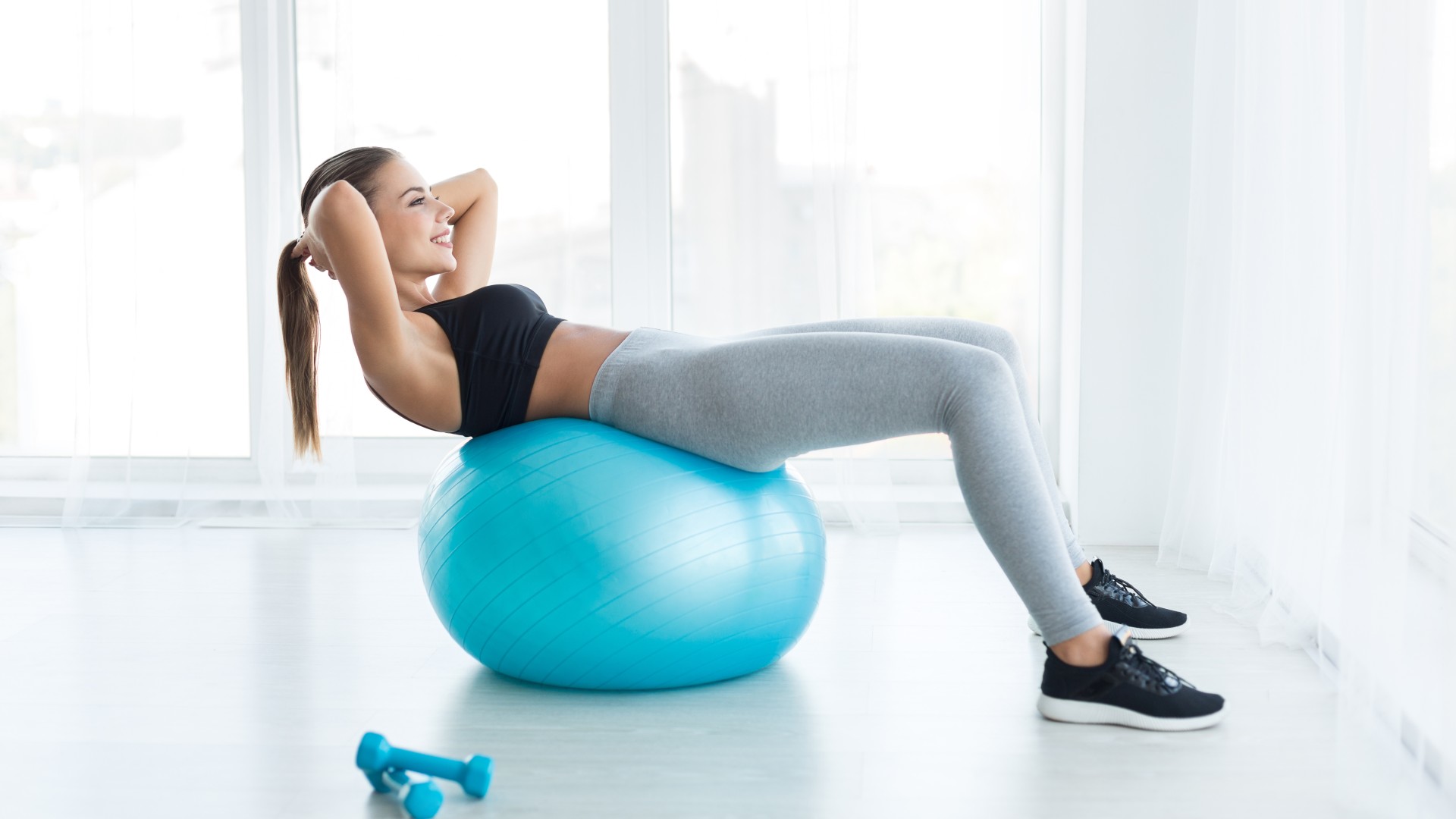
You can use a Swiss ball to turbocharge your ab workouts the next time you’re keen to torch your midsection without using weights.
Also known as stability balls or exercise balls, Swiss balls are large inflatable spheres found anywhere from home and commercial gym settings to your local physio. They’re low impact and can improve mobility, balance and coordination or help build muscular strength and endurance. Just don't underestimate them.
Below, we reveal three abs exercises you can do using one Swiss ball and how to ensure adopting proper form throughout. We recommend having one of the best yoga mats for home workouts on standby to offer your body support, then read on.
Many gym-goers write Swiss balls off because they don’t look like they can deliver an intense workout, but surprisingly, they’re very demanding on your body if you know how to use them properly.
Anyone attempting to balance on a big inflatable bouncy rubber ball for any length of time can attest to this, and we’ve thrown three of the best ab exercises into the mix to spice things up further.
Stability ball benefits
For each bodyweight exercise below, you’ll need to use your whole body to stabilize the ball, meaning all the smaller, lesser-known (and sometimes forgotten) stabilizer muscles will recruit alongside your bigger, dominant muscle groups. Exercising this way builds a stronger neuromuscular connection while strengthening your muscles and teaching them to recruit together, injury-proofing your body and improving your functional fitness.
Besides, these core exercises target more than just your abdominal muscles, hitting the shoulders, chest, arms, quads, glutes, hip flexors, hamstrings and other core muscles like your obliques and the transversus abdominis (a belt of deeper core muscles that sit beneath the abs).
Proper form is crucial for protecting yourself from injury when using gym equipment, so we’ve included some tips below.
Check out the best ab exercises you can do using one Swiss ball.
Swiss ball plank alphabets
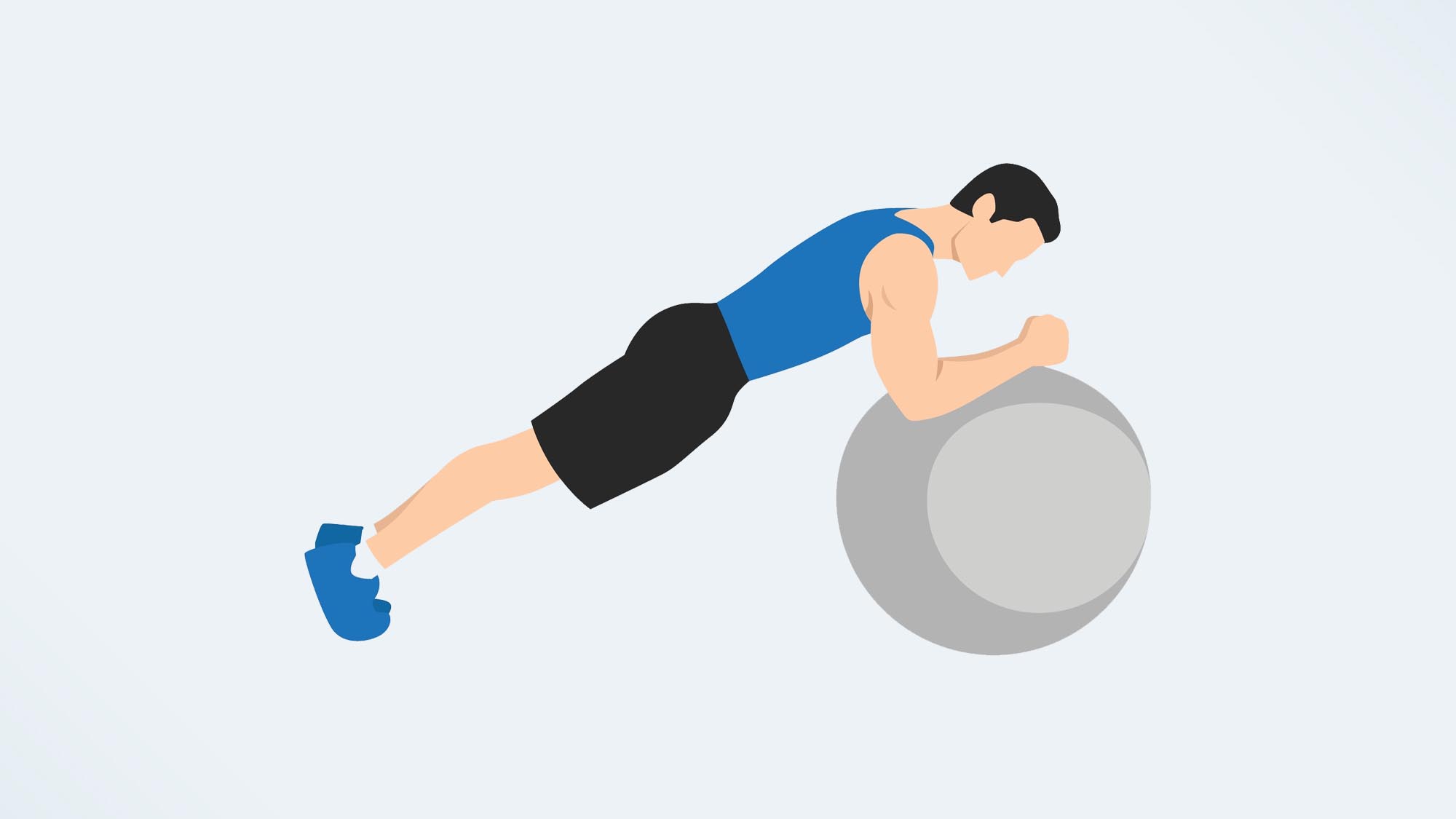
The exercise tests shoulder and core stability, coordination and balance while strengthening the same muscles as planks, including your core, chest, back, glutes, hip flexors and quads. If the alphabets prove too challenging, see what happened when our writer did Swiss ball planks for a week instead.
- Start in a forearm plank position with your elbows resting on the Swiss ball in front of you
- Ensure your shoulders stack over your elbows and rest on the balls of your feet, creating a straight line from head to toe
- Brace your stomach
- Begin spelling the alphabet by moving the ball with your elbows, using as much range of motion as possible without losing control of the ball.
Swiss ball leg raises
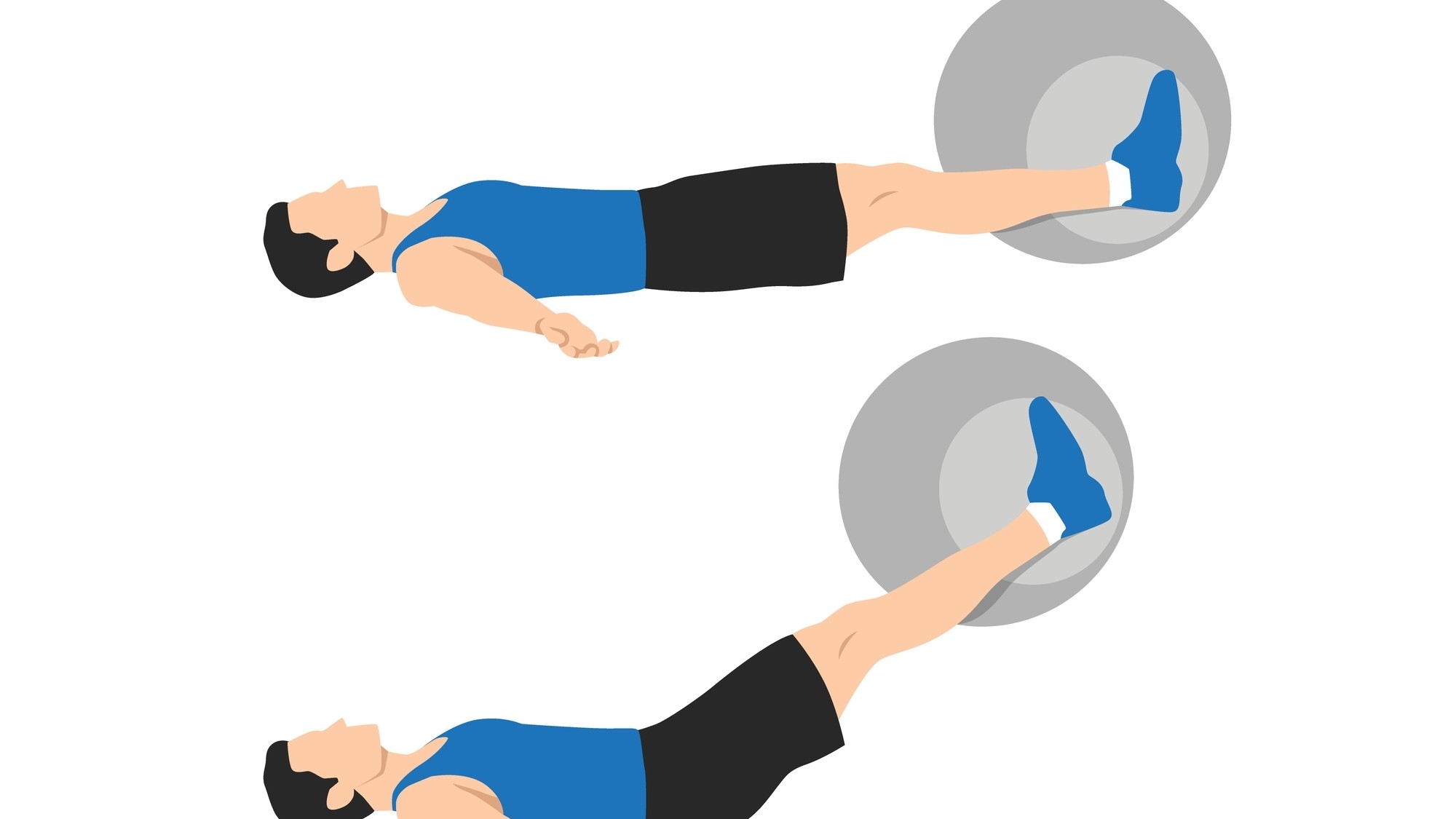
Swiss ball leg raises take a degree of existing core strength to do safely. If you feel the exercise in your lower back, bend your knees to reduce the intensity, and if your lower back still niggles, consider learning how to do leg raises and hanging leg raises first to build the requisite strength.
- Start on your back on an exercise mat
- Extend your legs and position the Swiss ball between them just above the ankles, pressing against the ball to engage your inner thighs
- Gently brace your stomach and tuck your pelvis toward you to flatten your lower back into the floor
- Position your arms in a T-shape on the floor either side of you or by your sides
- Lift your legs into the air
- Slowly lower your legs toward the floor without lifting your back or shoulders
- Pause just above the floor, then drive your legs back up again
- For an advanced variation, bring your hands behind your head and lift your upper back away from the mat.
Swiss ball cross-knee tucks
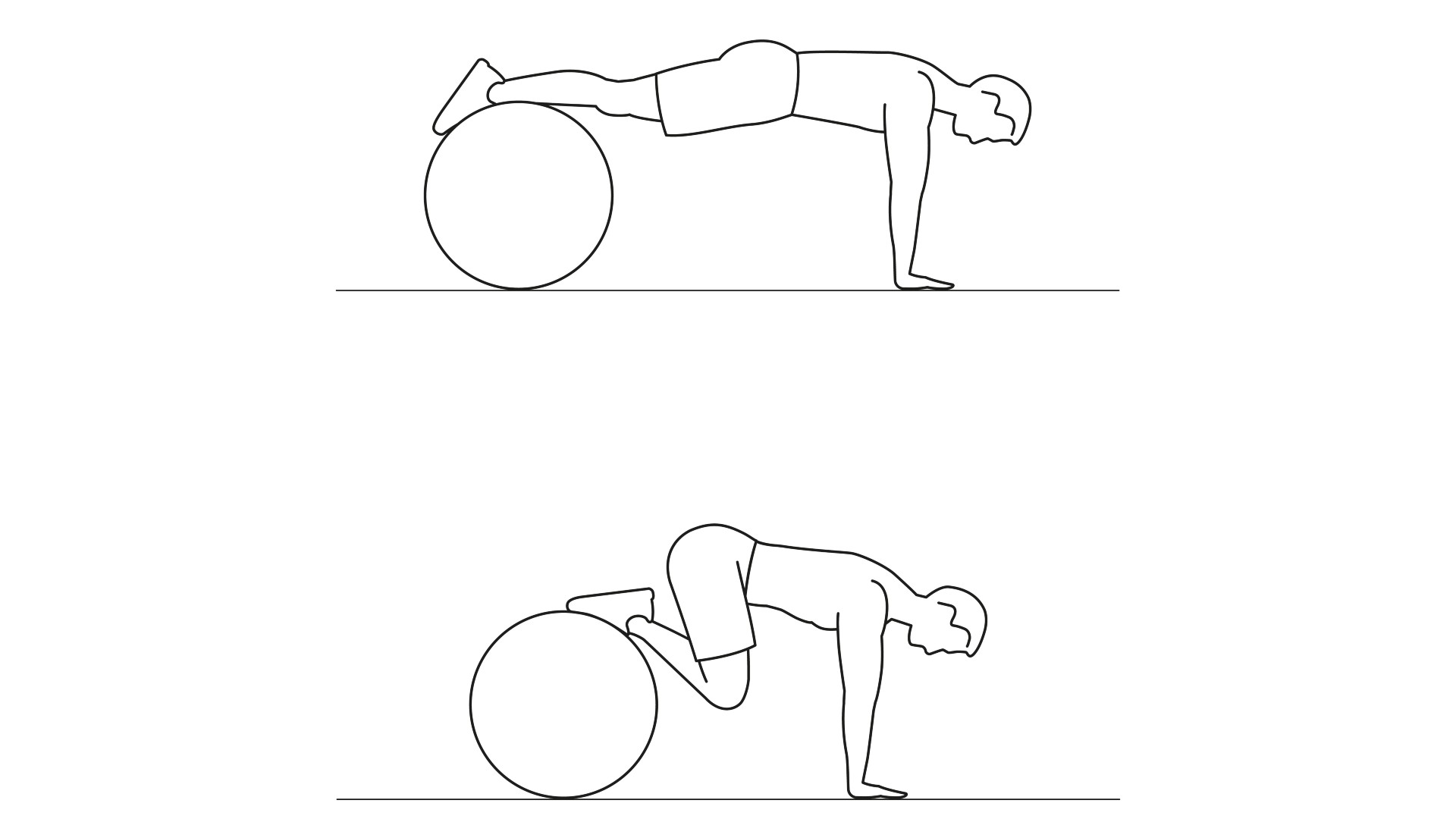
The knee tuck is a great way to target the entire body, particularly the front body, including the shoulders, arms, chest, abs, obliques, hip flexors, lower back, glutes, quads and hamstrings.
The cross-knee tuck variation works the oblique muscles harder and challenges stability and control more than traditional knee tucks. You could opt to elevate your hands on blocks or a set of dumbbells if you don’t have enough room to draw your knees toward you.
- Start in a high plank position with your Swiss ball behind you
- Stack your shoulders over your wrists and create a straight line from head to toe
- Avoid dropping your hips toward the floor or pushing your bum toward the ceiling — brace your stomach, glutes and quads tightly while breathing toward your abdomen
- Place both feet on the Swiss ball with the tops of your feet pressing into the ball
- Draw your knees toward your left elbow, roll the ball back to the starting position, then repeat on your right side.
Swiss ball workout
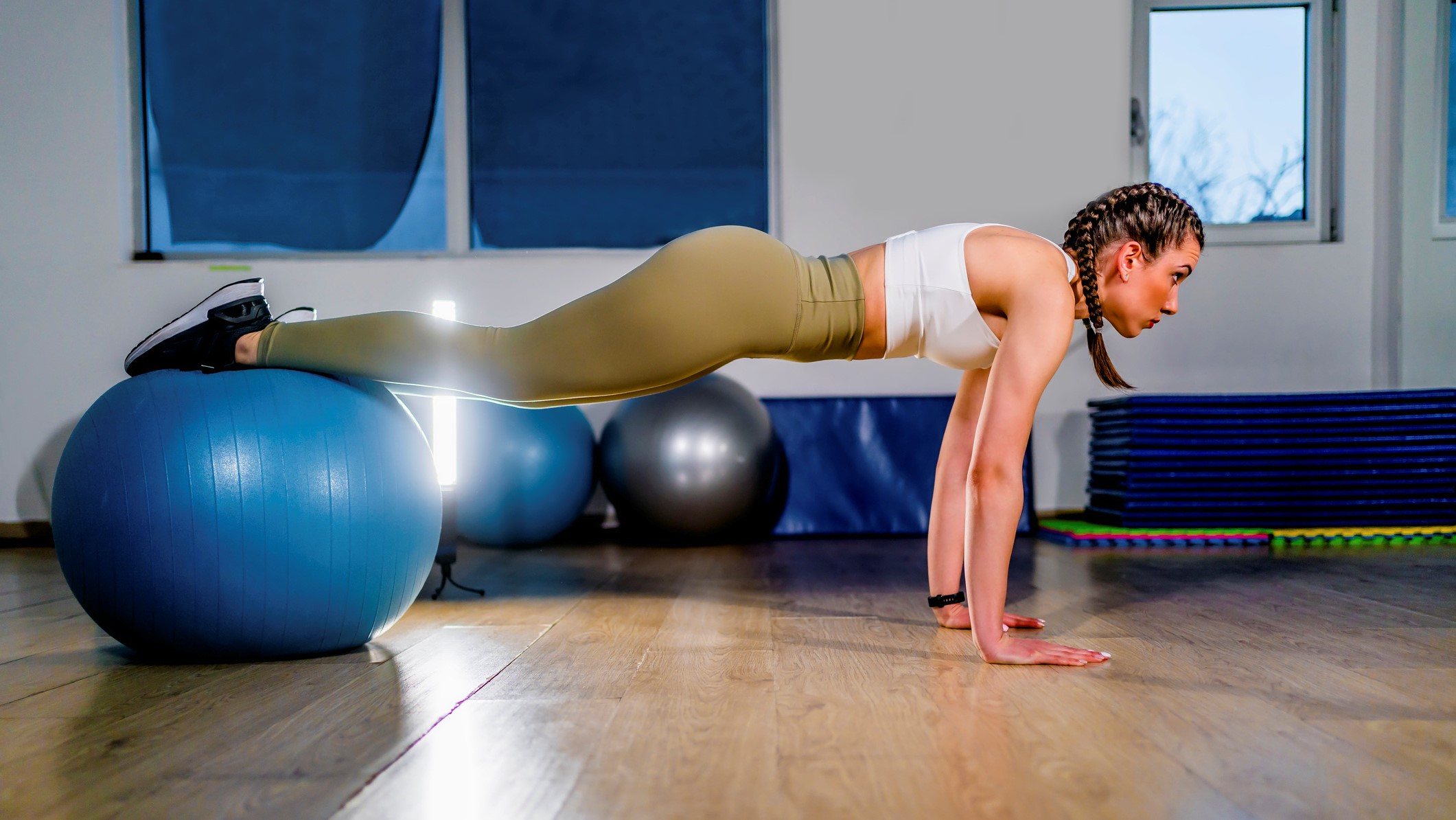
Work for 60 seconds, aiming for at least 8-10 reps per exercise (or 8-10 letters if performing the alphabet) each round. Score the reps for your first round and try to match this for each subsequent round to hit consistency.
Rest for 15 seconds between exercises and perform the ab exercises as a circuit, completing 4-6 rounds depending on your experience or how much time you have.
60 seconds on/ 15 seconds off x 4-6 rounds:
- Swiss ball plank alphabets
- Swiss ball leg raises
- Swiss ball cross-knee tucks
Remember to breathe during the exercises, which sounds obvious, but for many people, it's the first thing to go when an exercise gets difficult. Our default setting is to hold our breath in moments of stress, but holding your breath during exercise can raise your blood pressure. Try to exhale as your body meets with the most resistance, and inhale during the least amount.







